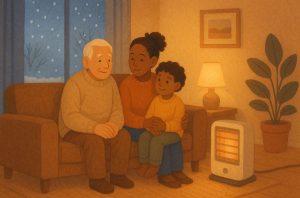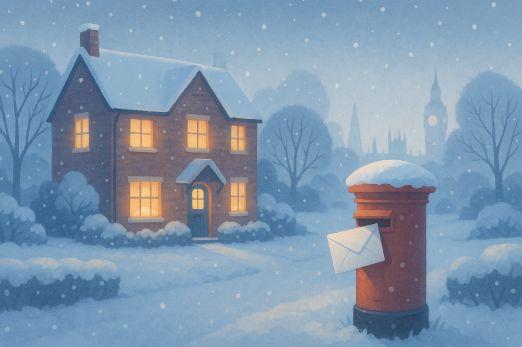As winter settles over the UK, many households across London and beyond are bracing for the impact of colder temperatures and higher energy bills. Among the government’s efforts to provide relief is the £140 Cold Weather Payment, a targeted financial support scheme designed to ease the burden of heating costs for vulnerable individuals.
This blog explores in detail when the payment will be made, who qualifies for it, and how the scheme functions across the country—particularly in the capital, where living costs are already high.
What Is the £140 Cold Weather Payment and Who Is Eligible?
 The Cold Weather Payment is a long-standing initiative from the Department for Work and Pensions (DWP) that supports people on low incomes when the weather turns severely cold. This payment is separate from the Winter Fuel Payment and is specifically aimed at those most at risk of fuel poverty during the coldest days of the year.
The Cold Weather Payment is a long-standing initiative from the Department for Work and Pensions (DWP) that supports people on low incomes when the weather turns severely cold. This payment is separate from the Winter Fuel Payment and is specifically aimed at those most at risk of fuel poverty during the coldest days of the year.
To qualify, individuals must already be receiving certain income-related benefits, such as Pension Credit, Universal Credit, Income Support, income-based Jobseeker’s Allowance, or Employment and Support Allowance. The criteria may vary slightly depending on personal circumstances, such as whether a household includes young children, people with disabilities, or pensioners.
How Does the Cold Weather Payment Scheme Work in the UK?
The Cold Weather Payment operates on a temperature-triggered system. Between 1 November and 31 March, the DWP monitors weather data supplied by the Met Office. If the average temperature in a person’s local area is recorded as, or forecast to be, 0°C or below for seven consecutive days, a payment is issued automatically to those eligible.
Each period of cold weather triggers a payment of £25. For winter 2025–2026, an additional £140 support payment is being rolled out as a one-time bonus in response to increased energy costs, reflecting the government’s continued efforts to alleviate fuel poverty during a period of financial strain.
When Will the £140 Cold Weather Payment Be Made in 2025?
The government has indicated that the new £140 Cold Weather Payment will begin distribution in mid-December 2025, coinciding with the period when sustained low temperatures are most likely. This follows the same automatic process used for the regular £25 weekly payments, ensuring that recipients do not need to apply or take any action to receive the funds.
Based on past data, areas including parts of Greater London may begin seeing qualifying weather events as early as mid-December, though more frequent triggers typically occur in January and February.
Cold Weather Payment Timeline (2025–2026)
| Period | Temperature Trigger | Expected Payment Status |
| November 2025 | Monitoring begins | Payments unlikely |
| December 2025 | Likely cold spells | First wave of £140 payments issued |
| January–March 2026 | Regular cold spells expected | Ongoing weekly £25 payments |
What Conditions Trigger the Cold Weather Payment?
 The criteria for triggering a Cold Weather Payment are strict to ensure the funds go to those most in need. Specifically, a payment is issued when the temperature in a specific area is recorded or forecast to remain at or below 0°C for seven consecutive days. This data is collected from a network of postcode-linked weather stations, which ensures accuracy and regional fairness.
The criteria for triggering a Cold Weather Payment are strict to ensure the funds go to those most in need. Specifically, a payment is issued when the temperature in a specific area is recorded or forecast to remain at or below 0°C for seven consecutive days. This data is collected from a network of postcode-linked weather stations, which ensures accuracy and regional fairness.
In London, some of the primary weather stations used for monitoring include locations such as Heathrow and Northolt. If your area meets the temperature threshold, the payment is automatically processed without the need for an application.
How Will Eligible People Receive the £140 Payment?
Eligible recipients will receive the £140 payment in the same bank or building society account they use to collect their benefits. The funds are typically transferred within 14 working days from the end of the cold weather period that triggered the payment. The transaction appears on bank statements under a description like “DWP COLD” or similar.
Because the system is automatic, claimants do not need to apply or notify the DWP unless they believe a payment has been missed or their circumstances have changed.
What Should You Do If You Haven’t Received the Cold Weather Payment?
If you think you should have received the payment but have not seen it in your account within the expected timeframe, there are several steps you can take. First, check the GOV.UK postcode checker to verify whether a cold weather trigger occurred in your area. If your area qualifies, and you are certain you meet the eligibility criteria, then it’s advisable to contact your local Jobcentre Plus or the Pension Service to investigate the issue further.
In many cases, delays may occur due to changes in circumstances that have not yet been updated in your benefit records, so keeping these details current is essential.
How Does This Payment Help Londoners Struggling With Energy Costs?
 In a city like London, where housing costs are already among the highest in the UK, any additional expenses can place immense strain on household budgets. For vulnerable residents especially pensioners, people with disabilities, and low-income families the Cold Weather Payment offers a lifeline during harsh winter months.
In a city like London, where housing costs are already among the highest in the UK, any additional expenses can place immense strain on household budgets. For vulnerable residents especially pensioners, people with disabilities, and low-income families the Cold Weather Payment offers a lifeline during harsh winter months.
By covering a portion of heating expenses, this scheme not only helps prevent debt and arrears with utility providers but also supports people’s health and well-being. Keeping a home warm is a basic necessity, and this payment ensures more Londoners can manage that without choosing between heating and essentials like food or medication.
Are There Other Government Schemes Supporting Winter Energy Costs?
The Cold Weather Payment is just one part of a broader strategy to support residents during winter. Other schemes provide additional layers of assistance, often overlapping in eligibility to ensure wider coverage.
Winter Support Schemes Overview
| Scheme | Support Amount | Key Eligibility Criteria |
| Winter Fuel Payment | £250–£600 | People born before 25 September 1958 |
| Warm Home Discount | £150 (one-off) | Low-income households or those on certain benefits |
| Household Support Fund | Variable (Local) | Provided through local authorities |
| Energy Bills Support Scheme | Ended (was £400 in 2022–23) | May return depending on government policy |
Residents may be eligible for more than one scheme, increasing their ability to stay financially secure through the winter months.
What’s the Difference Between Cold Weather Payment and Winter Fuel Payment?
While both schemes are designed to help with winter heating costs, their scope and structure are different. The Cold Weather Payment is reactive, triggered by actual cold weather, while the Winter Fuel Payment is proactive, given to eligible pensioners every year regardless of temperature.
Cold Weather Payment vs Winter Fuel Payment
| Feature | Cold Weather Payment | Winter Fuel Payment |
| Payment Amount | £25 per 7-day cold spell (+£140 bonus) | £250–£600 |
| Temperature Dependent? | Yes | No |
| Target Group | Low-income or benefit recipients | Pensioners aged 66+ |
| Application Required? | No | No |
| Payment Timing | As weather occurs | Typically Nov–Dec annually |
Will There Be Any Changes to the Cold Weather Payment Scheme in 2025?
 For the winter of 2025–2026, the government has announced the continuation of the Cold Weather Payment scheme with no major structural changes. However, the addition of the £140 one-off energy support payment reflects a growing recognition of the increased cost of living and fuel prices in recent years.
For the winter of 2025–2026, the government has announced the continuation of the Cold Weather Payment scheme with no major structural changes. However, the addition of the £140 one-off energy support payment reflects a growing recognition of the increased cost of living and fuel prices in recent years.
Policy discussions are ongoing about whether the standard £25 weekly payment should be increased, especially with inflation affecting utility bills. For now, the core elements of the scheme remain the same, with monitoring continuing throughout the winter months.
Conclusion
The Cold Weather Payment continues to play a vital role in safeguarding the well-being of the UK’s most vulnerable populations. As cold spells become more unpredictable and energy costs remain high, the payment ensures that low-income households in London and across the UK are not left out in the cold.
With the added £140 bonus in 2025, this winter’s scheme offers even more substantial support, helping residents maintain warm, healthy living conditions throughout the harshest months of the year.
FAQs About the £140 Cold Weather Payment
Who verifies the weather conditions for the Cold Weather Payment?
The Met Office provides the temperature data used by the DWP to determine whether an area meets the cold weather threshold.
Can someone receive both the Cold Weather and Winter Fuel Payments?
Yes, individuals who meet the criteria for both schemes can receive both payments, as they are separate initiatives.
Is the £140 energy support payment automatic?
Yes, just like the standard Cold Weather Payment, the £140 bonus payment will be issued automatically if eligibility conditions and temperature triggers are met.
What if I move homes during the winter?
Your eligibility may change based on your new postcode and updated benefits record. Always notify the DWP of any address change.
Are Cold Weather Payments considered taxable income?
No, these payments are not taxable and do not impact other benefits you receive.
Will the £140 payment affect my Universal Credit?
No, this payment is separate and does not count towards your income for benefit assessments.
Where can I check if my area has had a cold weather trigger?
The GOV.UK website provides a postcode checker to see if your area has experienced a qualifying cold spell.








